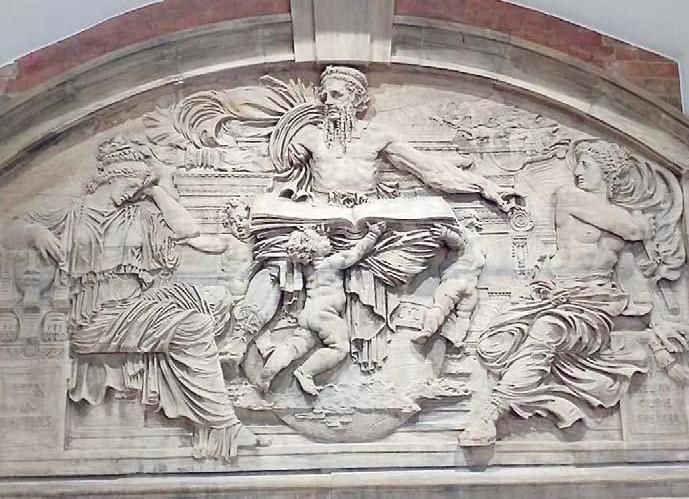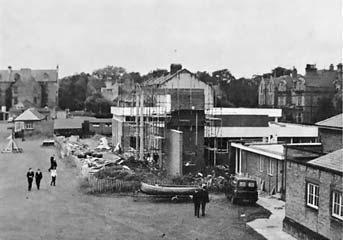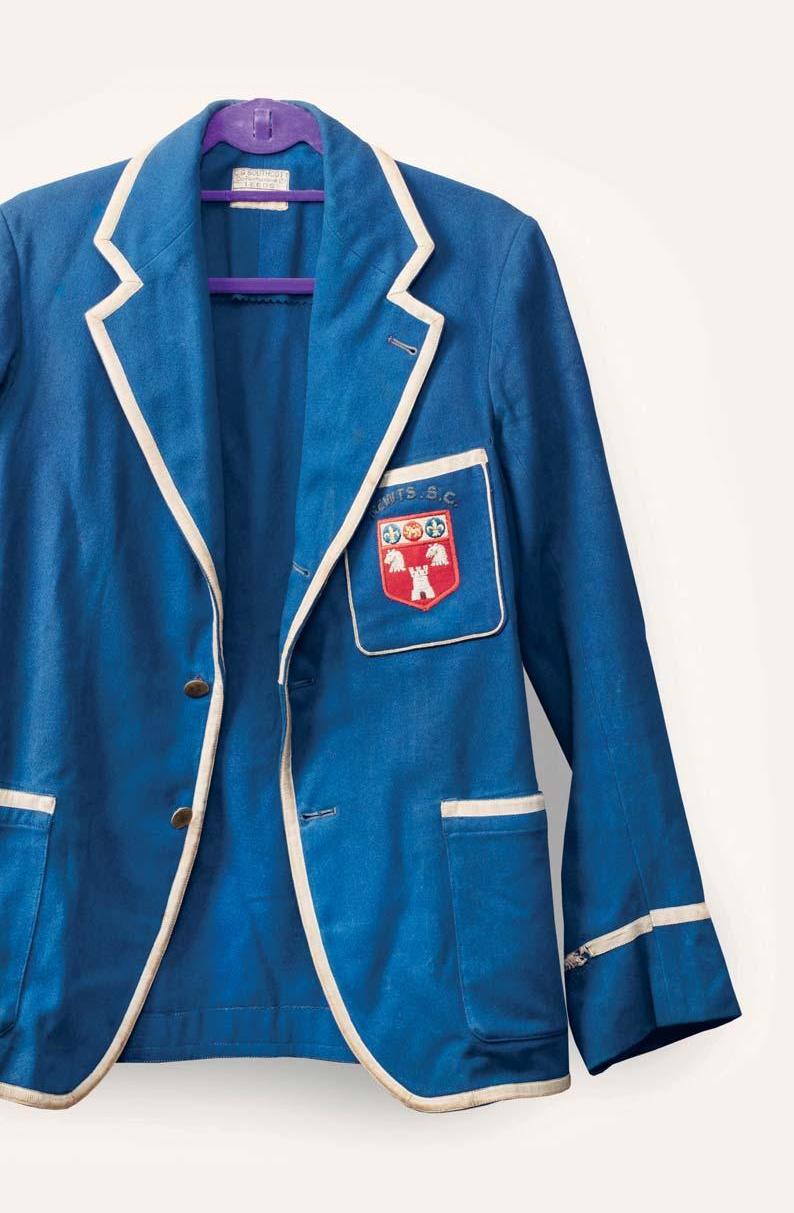
6 minute read
THE SCHOOL UNIFORM – WHAT’S IT ALL ABOUT? THE EDITOR
THE SCHOOL UNIFORM
WHAT’S IT ALL ABOUT?
Advertisement
BY THE EDITOR
NEWTS (Junior Swimming Club) colours Blazer - originally the NEW-TS - anyone know why!
Older ONs will recall those Newcastle retailers specialising in School Uniforms, the earliest of these being Raymond Barnes, whose premises at 102 Grey Street will be remembered by many alumni.


Their small premises were adorned with the crests of dozens of schools and it was a late summer ritual to visit these ‘outfitters’. Isaac Waltons in Grainger Street and Bainbridges, later John Lewis, became the appointed specialists, and the Archives hold a Cricket Blazer made from BAINBRO ‘venetian striped’ fabric. Latterly, uniforms and sportswear are bought by parents online from two approved companies.
For my own part, as manufacturers of School Blazers (Distinctive Clothing) supplied all over the UK and beyond, it was an education in itself dealing with very many schools across the entire country. Whilst the great majority of uniforms, girls and boys, vary only in their colours and fabrics, there are still some anomalies and particular eccentricities perpetuated by a good number of institutions. King’s College, Canterbury have continued the striped trousers and now skirts which used to accompany formal dress jackets. My family used to cringe on holidays as I ‘interviewed’ boys and girls about which school they attended. One hilarious example was twin lads attending Blundell’s School, Tiverton, whose boys wore a most
unattractive mid brown prickly tweed sports jacket, which over a century had attracted a somewhat obscene nickname. After revealing that we were the manufacturers, they shouted “Dad, dad, this man makes the sh***er!”
Robe-like outfits had existed since the 13th Century, but the monastic cassock worn by the pupils of Christ’s Hospital in the 16th Century was probably the first school uniform. It was not until the 19th Century that the fee-paying public schools adopted the idea. The reason for their conversion was simple. The old public schools had been anarchic places in which the young aristocrats dressed as they wished and played their voluntary games in whatever worn or battered gear was to hand. Uniformity of dress was one of the consequences of the movement to replace anarchy with order. Along with compulsory games, stricter supervision of the pupils’ lives and morals and the broadening of the classical curriculums, school uniform was an essential characteristic of the reformed public schools. School specific outfits were developed by individual public schools over the years (students at the prestigious Eton College were required to wear a black top hat and tails as their uniform up until 1972), but cost has largely rendered these obsolete and the most iconic item of clothing for both girls and boys today is still the blazer.
It seems to be at Rye Hill, where uniform was first introduced to the RGS. A photo of the boys at the School at Charlotte Square, just off Westgate Road, shows a variety of garb, with an equally miscellaneous selection of headgear, from bowlers to bakers’ hats. By the end of the 19th Century, the pupils at Rye Hill seem to be far more uniformly dressed with a neat cap and the large Eton collars of the age. With the move to Jesmond at the outset of the 20th Century, the uniforms became more like those in use today.
The blazer owes its existence and indeed its name to the bright red jackets of the Lady Margaret College Cambridge Boating Club and as a result of being worn by the St John’s College Boating Team, were once described as ‘ablaze on the river Cam’. By the 1920s and 30s, striped and plain jackets, often worn for Cricket or Boating and universally named Blazers, became common in more and more schools. Girls’ uniforms adopted this style, buttoned right over left. RGS uniforms of today are similar to those of the mid 20th Century, with the exception of the school cap, which evolved through different styles and badging over the years. The illustrations on these pages show the variety of styles throughout the School’s history. The double badge is a relic of the 19th Century and the present crest evolved from a melding of the Royal Arms and the Newcastle City Crest. When Junior pupils entered the Senior School, their house emblem was attached to the top of the badge. Houses named Reds, Greens, Browns and Blues, indicated by varied colours in the cord trimmings on the school cap, were first established on the school’s move to Jesmond in 1906. In 1925, the Headmaster, ER Thomas (22-48) had presided over a ceremony marking the fourth centenary of Thomas Horsley’s will

Boys at RGS in Charlotte Square, 1867
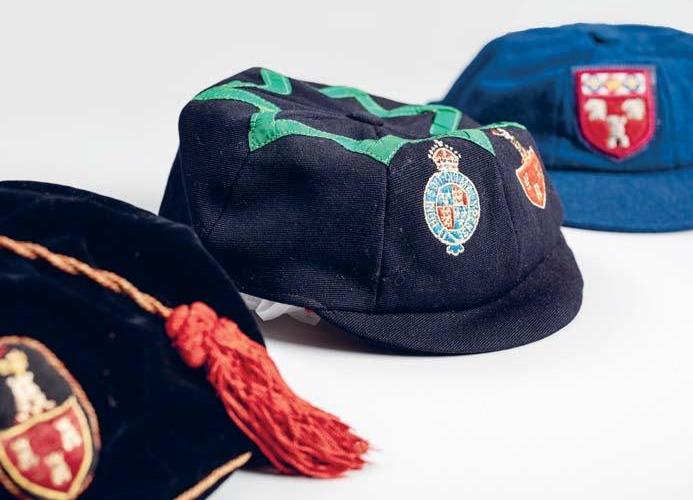
where the portraits of Lords Eldon and Stowell were unveiled in the school’s Main Hall. In 1931, the old crests of Queen Elizabeth I and the City of Newcastle were unified into a new crest granted by the College of Arms and the houses were renamed Collingwood, Eldon, Horsley and Stowell. Also, at that time, the houses were renamed to honour four local influential historical figures and since then it is to Collingwood, Eldon, Horsley and Stowell that RGS students have pledged their loyalty and galvanized their best efforts in sport, music, debating and other areas.
Today, the house colours remain, together with the symbols from the 1931 Coat of Arms. Eldon in green, symbolized by the castle, Horsley in blue, taking on the head of the horse, Stowell in red represented by the lion whilst Collingwood now bears the brighter colour of yellow, adopting the Fleur-de-Lys.
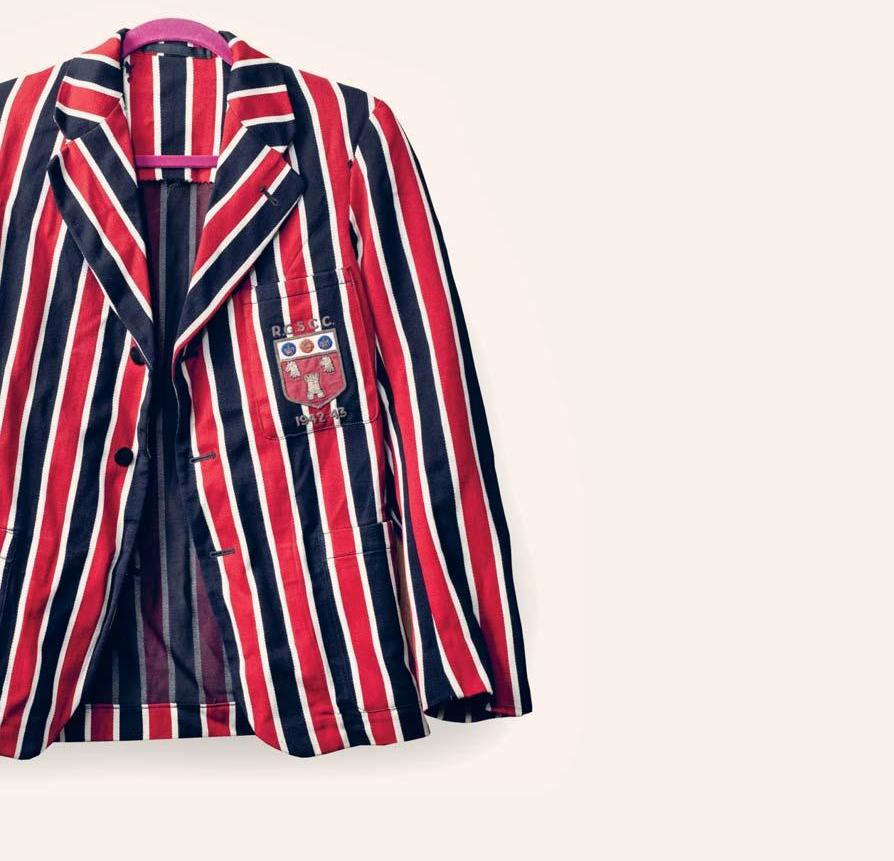
In 1960, after the appointment of WD Haden (60-72) as Headmaster, the blue flannel blazer was joined by a black version for Middle and Senior boys up to the Sixth Form. Flannel gave way to washable polyester or polyester/viscose and after girls were admitted to the school in 2001, a complete re-design including the somewhat controversial transformation of the old crest into the more modern version in use today and girls’ blazers now display the badge on the lapel.
In other countries such as Pakistan, India, Thailand and Indonesia, as well as across Africa, school uniforms were introduced during the British colonial period. In New Zealand and Australia, the uniform system was and still is followed in the public schools following similar rules to those in Great Britain. So it would seem that the school uniform does have deep historical roots and the purpose for having one has not changed much over the centuries. Politics has entered into the whole question of uniforms and their cost in recent years, but whether you feel that it means that pupils lose a sense of individuality, it is hard to argue that it does bring a sense of equality across the social groups and teaches young people the importance of portraying a professional image which surely can only aid them in their future careers.
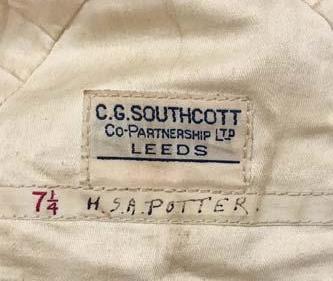
H Potter’s cap label!
Do you have a heritage item of School Uniform for the Archives? Contact the Development Office.
Embroidered crests of Queen Elizabeth I and the City of Newcastle




